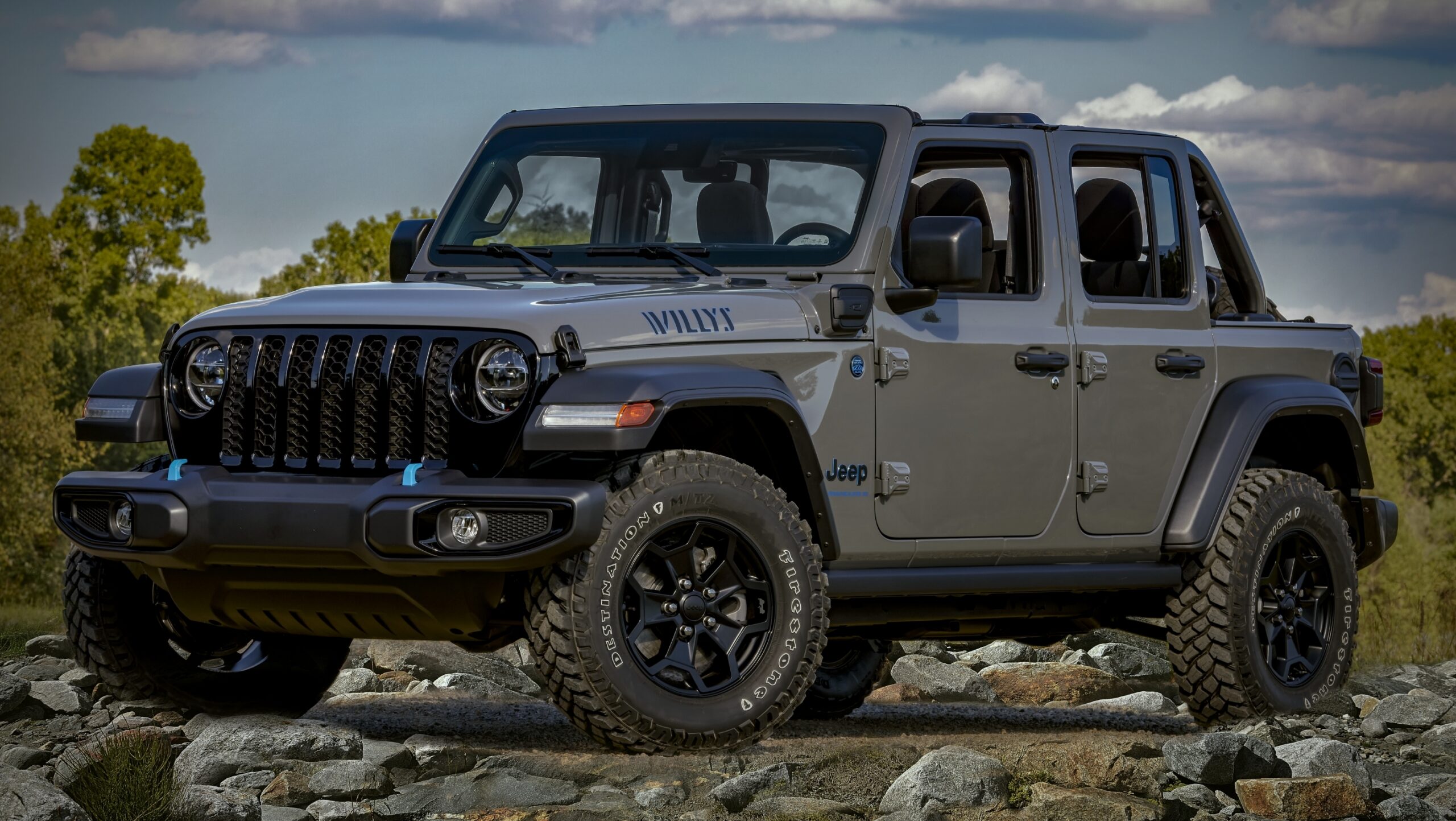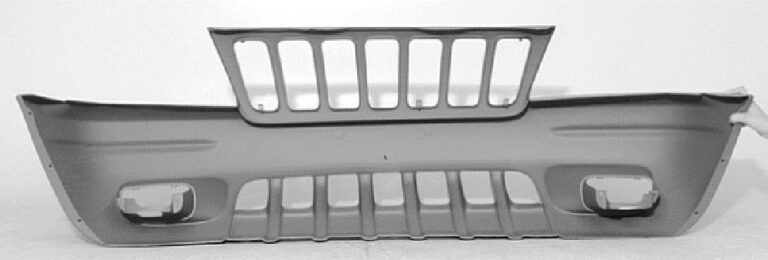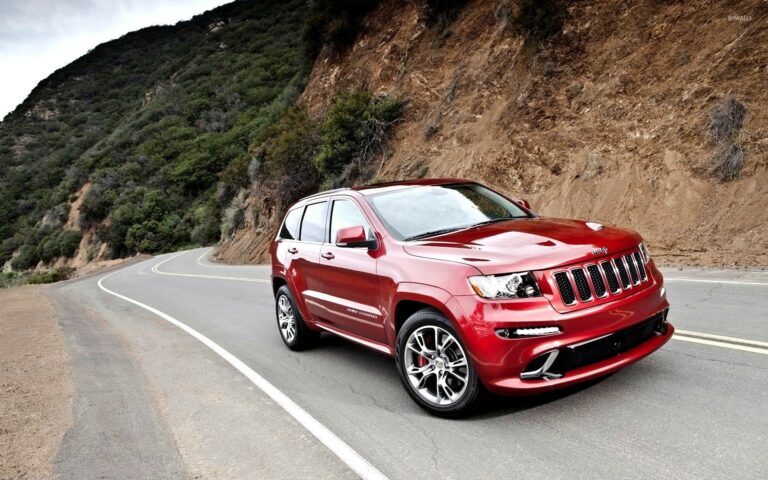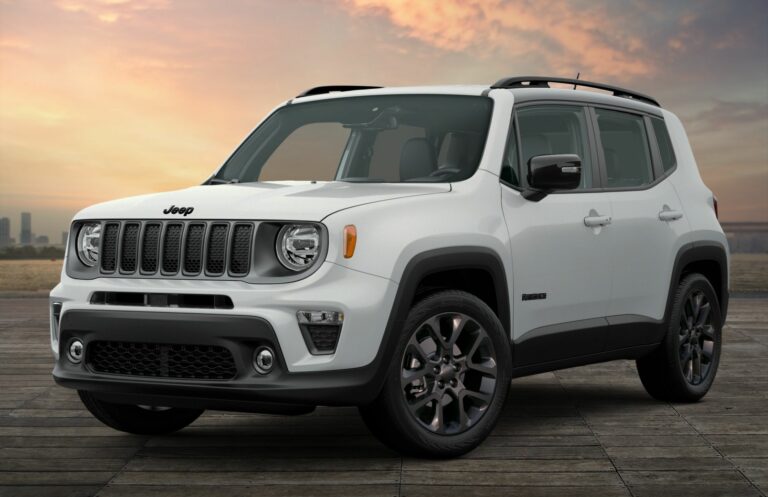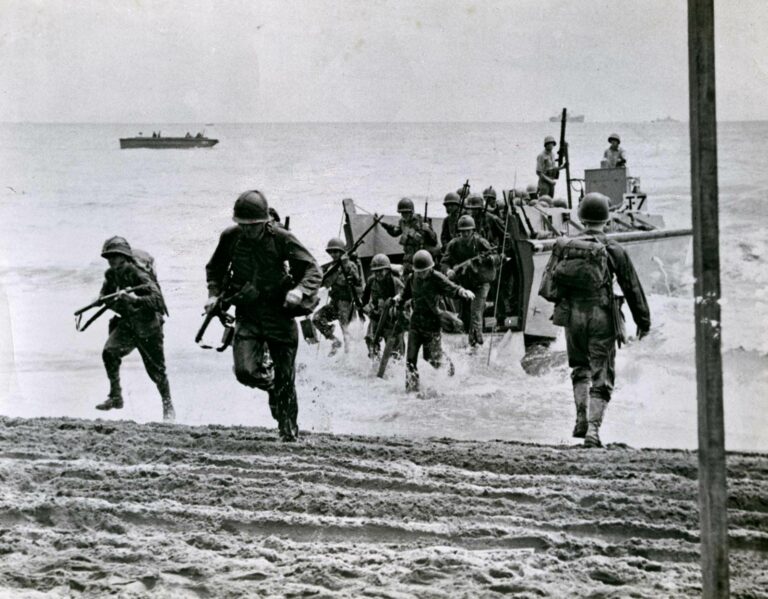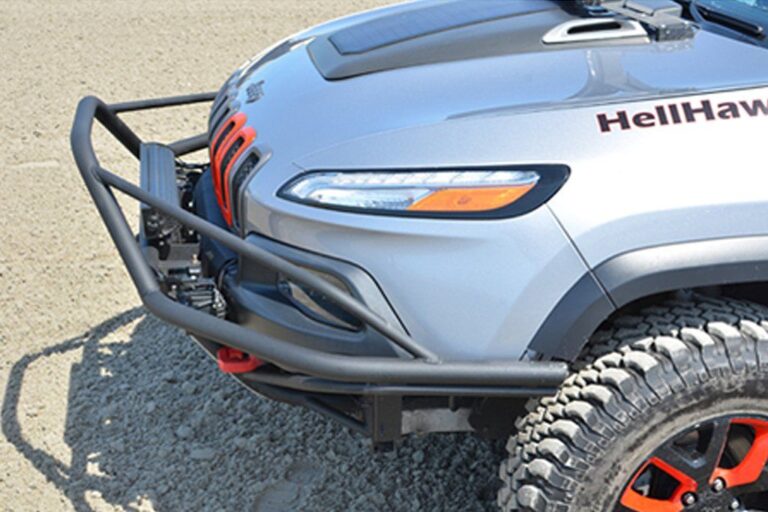Jeep Wrangler JL 2 Door With 35 Inch Tires: The Ultimate Guide to Capability and Style
Jeep Wrangler JL 2 Door With 35 Inch Tires: The Ultimate Guide to Capability and Style jeeps.truckstrend.com
The Jeep Wrangler has long been an icon of off-road prowess and adventurous spirit. For many enthusiasts, the two-door JL model represents the purest form of this legend, offering unmatched agility and a classic silhouette. But when you combine the nimble 2-door JL with the formidable presence and enhanced capability of 35-inch tires, you unlock a new level of performance and aesthetic appeal. This comprehensive guide will delve into everything you need to know about transforming your Jeep Wrangler JL 2-Door into a true off-road beast with 35-inch rubber.
The Allure of the 2-Door JL with 35s: Why This Combination Reigns Supreme
Jeep Wrangler JL 2 Door With 35 Inch Tires: The Ultimate Guide to Capability and Style
The Jeep Wrangler JL 2-Door is celebrated for its shorter wheelbase, which translates to superior breakover angles and incredible maneuverability on tight trails. It’s the quintessential "Jeep" experience, raw and unadulterated. However, stock Wranglers, while capable, often leave owners craving more ground clearance and a more aggressive stance. This is where 35-inch tires come into play.
Fitting 35-inch tires significantly boosts ground clearance, allowing you to clear larger obstacles with ease. They provide a larger contact patch for enhanced traction on various terrains, from rocky climbs to muddy trails. Beyond the functional benefits, 35s dramatically improve the vehicle’s aesthetic, giving it a more muscular and purposeful look that truly stands out. The synergy of the compact 2-door JL and the commanding 35-inch tires creates a vehicle that is not only visually striking but also supremely capable, ready to tackle almost any adventure you throw its way.
Essential Modifications for Running 35-Inch Tires on Your JL 2-Door
While the appeal of 35s is undeniable, simply bolting them on is not an option. Several crucial modifications are necessary to ensure proper fitment, safety, and optimal performance.
1. Lift Kit: Gaining Crucial Clearance
The primary modification required for 35-inch tires is a lift kit. The exact height needed depends on your intended use and fender choice, but generally, a 2.5-inch to 3.5-inch lift is recommended for the JL 2-Door to clear 35s with adequate articulation.
- Spacer Lifts: The most affordable option, using spacers above or below the factory coil springs. Good for mild off-roading but doesn’t improve suspension travel.
- Spring Lifts: Replace factory springs with taller ones, often combined with new shocks. Offers improved ride quality and articulation compared to spacers.
- Short Arm Lifts: Include new springs, shocks, and often new control arms (or cam bolts) to correct suspension geometry. A solid choice for moderate to serious off-roading.
- Long Arm Lifts: Best for extreme off-roading, replacing all control arms with longer ones mounted to new frame brackets. Provides superior articulation and ride quality but is more complex and expensive.

Important Note: When choosing a lift, consider kits that address common issues like caster correction (often with control arms or cam bolts), track bar relocation, and extended sway bar links to maintain proper handling and prevent "death wobble."

2. Wheels and Backspacing: Preventing Rubbing and Ensuring Stability
Even with a lift, the stock wheels on a JL are often too narrow and have too much positive backspacing (or offset) to properly clear 35-inch tires without rubbing.
- Backspacing: This refers to the distance from the wheel’s mounting surface to the back edge of the wheel. For 35-inch tires on a JL, wheels with 4.5 to 5 inches of backspacing are generally recommended. This pushes the wheel and tire assembly outward, away from suspension components and the frame, preventing rubbing during turns and articulation.
- Wheel Diameter & Width: Most 35-inch tires are designed for 17-inch or 18-inch wheels. Ensure your chosen wheel width is appropriate for the tire’s width (e.g., an 8.5-inch or 9-inch wide wheel for a 12.5-inch wide tire).

3. Fender Clearance: Stock vs. Aftermarket
While a good lift and proper wheel backspacing go a long way, aggressive off-road use can still lead to rubbing, especially with the stock fenders.
- Stock Fenders: With a 2.5-3.5 inch lift and appropriate wheels, 35s can fit. However, extreme articulation or disconnecting sway bars off-road might cause the tires to contact the fenders.
- Aftermarket Fenders: Options like flat fenders, high-clearance fenders, or chopped fenders provide significantly more clearance, allowing for greater suspension travel without rubbing. This is highly recommended for serious off-roaders.
4. Gearing: Restoring Performance and Fuel Economy
One of the most overlooked but critical modifications when going to 35-inch tires is re-gearing the differentials. Larger tires effectively change your final drive ratio, making the engine work harder, reducing acceleration, and negatively impacting fuel economy.
- Stock Gearing: Most JL 2-doors come with 3.45, 3.73, or 4.10 axle ratios.
- Recommended Gearing for 35s: For optimal performance with 35-inch tires, 4.56 or 4.88 gear ratios are typically recommended, depending on your engine (2.0L Turbo, 3.6L Pentastar, 3.0L EcoDiesel) and transmission (manual or automatic). Re-gearing restores the engine’s power band, improves acceleration, and helps maintain a reasonable RPM for highway cruising.
5. Other Important Considerations:
- Brake Upgrades: Larger, heavier tires increase unsprung weight and rotational mass, putting more strain on your braking system. Upgrading to larger rotors and calipers can significantly improve stopping power and safety.
- Steering Components: Stock steering components (tie rod, drag link) can be weak points with larger tires, especially during aggressive off-roading. Aftermarket heavy-duty steering components and a good steering stabilizer are wise investments.
- Tire Carrier: The stock tailgate-mounted tire carrier on a JL is not designed to handle the weight of a 35-inch tire and wheel. An aftermarket heavy-duty tire carrier (either bumper-mounted or reinforced tailgate-mounted) is essential to prevent tailgate damage.
- Speedometer Calibration: After installing larger tires, your speedometer and odometer will be inaccurate. An aftermarket calibrator (like a Tazer JL or similar device) is needed to correct this.
The Installation Process and Practical Advice
Installing these modifications can range from a DIY project for experienced mechanics to a job best left to professional off-road shops.
- DIY vs. Professional: A lift kit, wheels, and tires can be installed by a competent DIYer with the right tools (jack, jack stands, torque wrench, impact gun, various sockets/wrenches). However, re-gearing differentials is a precision job that requires specialized tools and expertise, almost always best left to a professional.
- Alignment: After any suspension modification, a professional alignment is crucial to ensure proper handling, tire wear, and safety.
- Tire Balancing: Given the size and weight, proper tire balancing is vital to prevent vibrations. Consider dynamic balancing for the best results.
- Break-in Period: After installing new gears, follow the manufacturer’s break-in procedure, which typically involves limited highway driving and avoiding heavy loads for the first few hundred miles.
Performance, Drivability, and Off-Road Prowess
Transforming your JL 2-Door with 35s has a profound impact on its character:
- On-Road Drivability: With proper re-gearing and a well-tuned suspension, the on-road manners can be surprisingly good. However, expect a slight increase in road noise from aggressive tires, a marginal decrease in fuel economy (even with re-gearing), and potentially a higher center of gravity feeling.
- Off-Road Prowess: This is where the 35s truly shine. The increased ground clearance, improved approach/departure/breakover angles, and enhanced traction from the larger footprint will allow your JL to conquer significantly more challenging terrain. You’ll navigate over rocks, through ruts, and across obstacles that would have previously stopped you in your tracks.
Maintenance and Long-Term Ownership
Maintaining your modified JL is crucial for longevity and safety:
- Regular Inspections: Frequently inspect your suspension components, steering linkages, and tires for wear, damage, or loose bolts.
- Tire Rotation and Balancing: Regular rotation (every 5,000 miles) is essential for even tire wear. Re-balance tires if you notice vibrations.
- Fluid Checks: Monitor differential fluid levels, especially after re-gearing.
- Legal Compliance: Be aware of local laws regarding lift heights and tire coverage. Some states require fenders to cover the entire tire tread.
Price Table: Estimated Costs for a Jeep Wrangler JL 2-Door with 35-Inch Tires
This table provides estimated costs for a new Jeep Wrangler JL 2-Door and the common modifications required to run 35-inch tires effectively. Prices can vary significantly based on brand, quality, installation complexity, and regional labor rates.
| Component / Service | Description | Estimated Cost Range (USD) | Notes |
|---|---|---|---|
| Base Vehicle (New JL 2-Door) | Jeep Wrangler Sport/Willys/Rubicon 2-Door Model | $32,000 – $50,000+ | Varies greatly by trim level, engine, and options. |
| 35-Inch Tires (Set of 5) | Four tires for the vehicle + one full-size spare | $1,500 – $2,500+ | Price depends on brand, type (AT/MT), and specific model. Includes mounting/balancing. |
| Aftermarket Wheels (Set of 5) | Wheels with appropriate backspacing (e.g., 4.5-5") | $800 – $2,000+ | Price varies by material (steel/alloy), design, and brand. |
| Lift Kit (2.5"-3.5") | Springs, shocks, control arms/brackets, track bar relocation, etc. | $800 – $4,000+ | Spacer lifts are cheaper, full suspension systems with advanced components are more expensive. |
| Professional Lift Installation | Labor for installing the lift kit | $500 – $1,200+ | Varies by shop rates and complexity of the kit. |
| Re-Gearing (Front & Rear) | New ring & pinion gears, master install kits, labor for both axles | $2,000 – $3,500+ | Highly recommended for optimal performance; labor is significant due to precision required. |
| Heavy-Duty Tire Carrier | Reinforced tailgate or bumper-mounted carrier for the larger spare | $400 – $1,200+ | Essential to prevent tailgate damage from the heavier 35" spare. |
| Speedometer Calibrator | Device to correct speedometer/odometer for larger tires | $200 – $400 | Examples: Tazer JL, AEV ProCal. |
| Aftermarket Fenders (Optional) | Flat or high-clearance fenders for maximum articulation clearance | $500 – $1,500+ | Optional but highly recommended for aggressive off-roading. |
| Brake Upgrades (Optional) | Larger rotors, upgraded calipers for improved stopping power | $500 – $2,000+ | Recommended for safety, especially if vehicle is heavily loaded or frequently off-roaded. |
| Steering Upgrades (Optional) | Heavy-duty tie rod, drag link, steering stabilizer | $300 – $1,000+ | Recommended for durability and handling with larger tires. |
| Professional Alignment | Post-lift alignment to correct suspension geometry | $100 – $250 | Crucial for proper handling and tire wear. |
| TOTAL ESTIMATED MODIFICATION COST | Excluding Base Vehicle | $6,800 – $17,550+ | This range is for the modifications ONLY, not including the cost of the Jeep itself. |
| TOTAL ESTIMATED INVESTMENT (Vehicle + Mods) | Jeep Wrangler JL 2-Door with 35-Inch Tires | $38,800 – $67,550+ | This is the approximate total cost to purchase a new JL 2-Door and fully equip it with 35s. |
Note: These are estimates. Prices will vary based on brand, quality, and labor costs in your region.
Frequently Asked Questions (FAQ)
Q1: Do I absolutely need a lift kit to run 35-inch tires on a JL 2-Door?
A1: Yes, a lift kit is essential. While some might claim you can fit 35s with minor trimming and no lift, you will experience significant rubbing, especially during turns and suspension articulation, making it unsafe and impractical for daily driving or off-roading. A 2.5-3.5 inch lift is generally recommended.
Q2: How much will my fuel economy be affected by 35-inch tires?
A2: Expect a noticeable decrease in fuel economy. Even with proper re-gearing, the increased weight, rolling resistance, and aerodynamic drag of 35-inch tires will reduce your MPG, typically by 1-4 MPG depending on driving style and specific modifications.
Q3: Is re-gearing really necessary, or can I just live with the reduced power?
A3: While you can technically drive without re-gearing, it’s highly recommended. Without it, your engine will constantly struggle, especially on inclines or at highway speeds, leading to poor acceleration, frequent downshifts, increased transmission temperatures, and even worse fuel economy. Re-gearing restores the vehicle’s drivability and power band.
Q4: Will installing these modifications void my Jeep’s warranty?
A4: This is a common concern. Under the Magnuson-Moss Warranty Act, a dealership cannot void your entire warranty simply because you’ve installed aftermarket parts. However, if a modification directly causes a failure of a factory component, that specific component’s warranty may be denied. It’s best to discuss your plans with your dealership or choose Mopar-approved lift kits to mitigate potential issues.
Q5: What’s the biggest tire size I can run on a stock JL 2-Door?
A5: On a stock JL 2-Door, 33-inch tires are generally the largest you can fit without major rubbing, and even then, some minor trimming or rubbing at full flex might occur. For reliable clearance and off-road capability, a lift is recommended even for 33s.
Conclusion
The Jeep Wrangler JL 2-Door with 35-inch tires is more than just a vehicle; it’s a statement of intent. It signifies a commitment to adventure, a desire for enhanced capability, and an appreciation for the iconic aesthetics of a truly built-out Jeep. While the transformation requires a significant investment in both time and money, the resulting vehicle offers an unparalleled blend of on-road presence and off-road dominance. By understanding the necessary modifications, planning your build carefully, and committing to proper maintenance, you can unlock the full potential of your JL 2-Door, making it a formidable machine ready to conquer any trail, turning heads wherever it goes.

